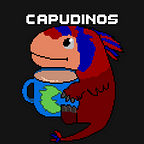Myths and some misunderstandings about the climate crisis
A few weeks ago, I made a comment on Instagram about the “misunderstanding” of the Disko Bay photo. I talk in more detail about her in this story:
But Disko Bay isn’t the only disinformation going around the Internet, and unfortunately, most of it drives us to choose the worst political candidate or give our money to a cheating “Eco-friendly” company. I invite the reader to stay on the page and discover some tabloid news that have become popular.
1. The hole in the ozone layer closed during quarantine
The presence of a hole in the ozone layer found in Antarctica has been known for years. Books like Chemistry, The Central Science, (by Brown et al.) take the trouble and time to explain the event.
As can be seen in figure 1, during the quarantine the idea that the hole had closed imminently became popular, which sounds to a certain extent “logical” since carbon dioxide emissions decreased significantly during those two months; however, it is only a myth, since the hole is already known to have been closing since 2016.
2. The planet has never been so hot
The favorite phrase for almost all the press programs and social network pages. The reader has probably heard of ice ages; an ice age is much worse than global warming, furthermore, as the reader can see in figure 2, we are in one of the coldest times on the planet. In fact, as a curious fact, Antarctica during the Mesozoic did not even have ice.
ATTENTION: I am not suggesting that global warming is a necessary evil, but rather that, as we can see in the next point, the climate crisis does not mean the “apocalypse” or the destruction of the globe.
3. Is it the end of the world
We are causing the rampant extinction of countless species, that is indisputable, despite efforts to prevent it, all species are destined to disappear; It does not matter if it is today or tomorrow, the human being will also become extinct, because we are just that, one more species just like the others that disappear.
4. Antarctica Blooms
I develop the topic again, because if this topic is explained correctly, it can end in a misunderstanding on the part of the receiver.
Unfortunately, I have read people on social networks pointing out that the fact that Antarctica blooms is false, just because the image corresponded to Disko Bay; the rest of the information can be read in figure 4.
5. Capitalism is to blame for the crisis
Those who know me, will know that I always run away when talking about politics, not because I don’t understand the subject, but because I know how controversial it is to express a point of view, which is why I prefer to limit myself to a scientific popularizer.
Of course there are many points of view, but the planet does not need us to be right, only that we are responsible for our actions.
6. We can escape from the planet
It sounds very naive and innocent, but it sounds amazing how many people have suggested this.
I will not go into many details, since the information is complete in figure 6.
At this point, I hope the reader does not believe that I am not a believer in climate change or that I consider it a “minor problem”, nothing could be further from the truth, I consider that there are many problems related to the climate crisis that are urgent to solve, to mention Some:
- Health problems due to polluted air.
- Animal extinction
- World Water Scarcity
- Plastic pollution
Little by little we are making an effort to solve these problems, and awareness is necessary more than ever; It is a very difficult crisis that we face, but we have hope.
I invite the reader to also read these stories (prepared by me) that although they do not deal with climate change, they are strongly related:
Bibliography:
Henrik Svensmark. (2019). Force Majeure The Sun’s Role in Climate Change. The Global Warning Policy Foundation.
Brown, T. L., LeMay Jr, H. E., Bursten, B. E., & Burdge, J. R. (2014). Química: la ciencia central. Pearson educación.
Apesteguía, S., & Ares, R. (2010). Vida en evolución: la historia natural vista desde Sudamérica. Vázquez Mazzini Editores.
Piñeiro, G. (2017). Extinciones masivas: Catástrofes necesarias para los cambios evolutivos. Universidad de Montevideo.
Boetius A. et al. (2000). A marine microbial consortium apparently mediating anaerobic oxidation of methane. https://www.nature.com/articles/35036572
Bohannon J. (2008). Weighing the climate risks of an untapped fossil fuel. Science. https://pubmed.ncbi.nlm.nih.gov/18369116/
